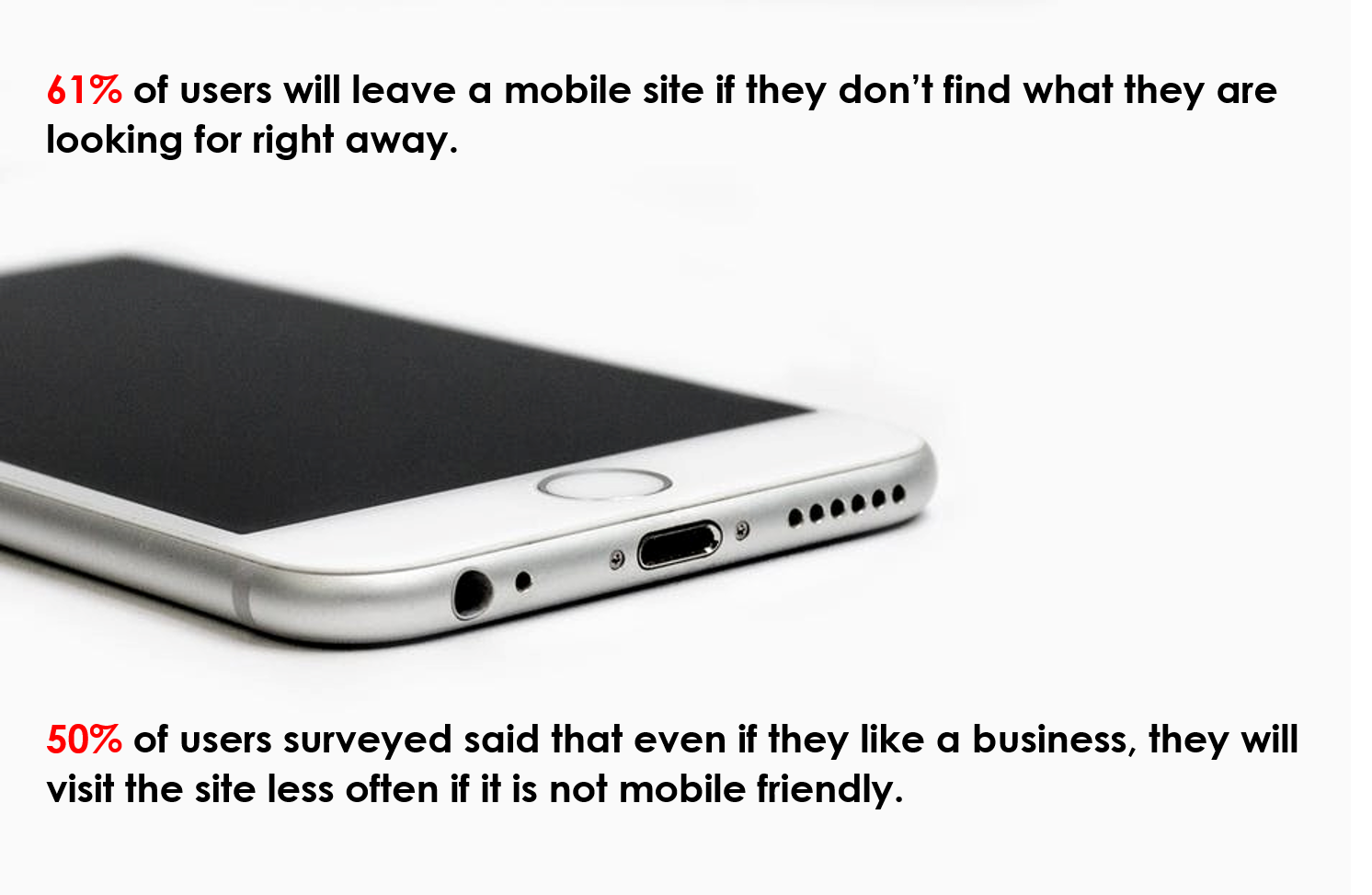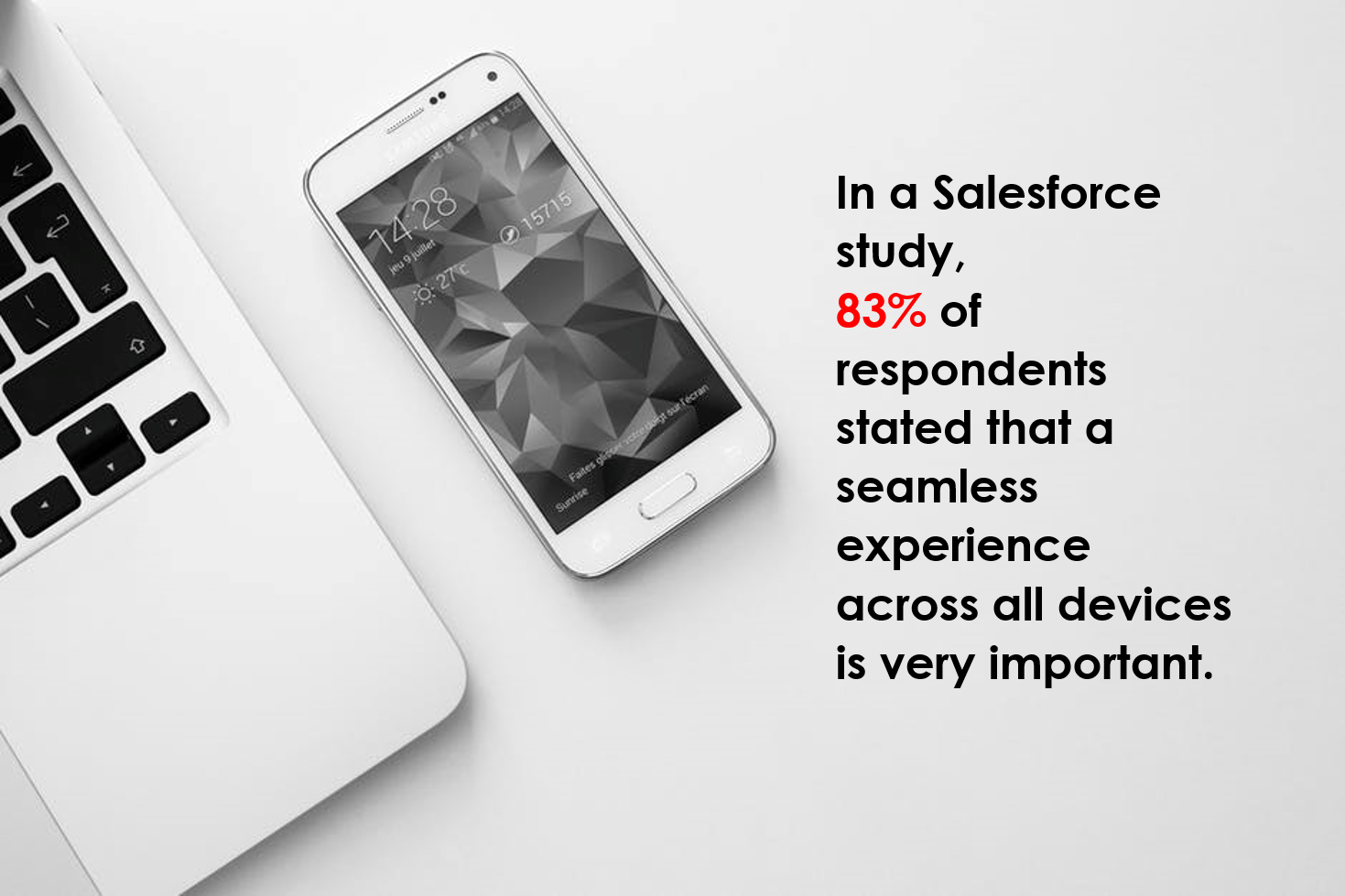Increased Market Share
There’s a lot of talk about how quickly mobile has gained momentum and we’ve passed the point where mobile traffic has eclipsed desktop traffic for many sites. But in the commerce sector in particular, there is nothing more important to focus on right now than the mobile shopping experience. Over the last several years we’ve seen m-commerce rapidly become an important source of revenue for e-commerce sites. Consider these statistics:
- By the end of 2018, mobile devices are expected to account for 27% of all e-commerce sales in the U.S. ( Source )
- In the 3rd quarter of 2017, U.S. mobile spending reached over $27 billion. ( Source )
These documented trends reflect a crucial inevitability: customers are reaching websites more frequently via mobile, and mobile devices will account for more traffic and revenue.
If your general feeling on that fact is, “Well, yeah – obviously.” Then you clearly haven’t been living under a rock. For most of us, what we’ve seen and experienced in our own lives is enough to give us the foundation to come to that same conclusion. But what does this really mean?
If intuitively we understand that mobile activity is taking up a greater market share, what are the practical implications of that?
Mobile User Experiences
There are a number of reasons for marketers to adopt the mobile-first mentality. Beyond the potential implications in search surrounding a mobile-first index, mobile transactions can have a higher per sale value than desktop ecommerce.
Importantly, mobile shoppers have little to no patience for a poor mobile experience. According to Google’s studies, consumer’s actions and opinions will be impacted by a site’s mobile friendliness.
- 61% of users will leave a mobile site if they don’t find what they are looking for right away.
- 50% of users surveyed said that even if they like a business, they will visit the site less often if it is not mobile friendly.
When users are leaving a website they are often going to search a competitor’s site instead. This means that brand affinity will no longer be enough to keep customers loyal if the mobile experience isn’t optimized. This places an emphasis on analyzing user engagement metrics as they apply to mobile interactions. User satisfaction with the site can be measured by KPIs like:
- Time on site and Pages per session – Do users stay long enough to browse and research, or are they coming and going quickly?
- Mobile cart abandonment – If there is a high level of cart abandonment on mobile, this suggests a frustrating or obstacle-filled transaction process.
- Conversion rate – How frequently do mobile visits turn into purchases? How does that compare with desktop rates?
These actions can help identify weaknesses in the mobile shopping process that can be shored up for a more streamlined and pleasant customer journey. But customer retention isn’t the only advantage of prioritizing mobile. A better user experience on mobile can pay off for buyers and sellers alike.
SocPub (formerly CMS Report) found that conversion rates on smartphones can be up to 64% higher than the average desktop conversion rates.
This suggests that higher mobile conversion rates are a sign that you are providing a positive, obstacle-free mobile experience. If that’s the case then, score. But a mobile-friendly website is, at this point, a baseline expectation. The next level challenge is merging online and offline worlds.
Connected Online and Offline Experiences
Advancing technology has been progressively breaking down the barriers between online and offline shopping experiences. These are no longer two distinct channels that operate independently from one another. Rather they are two means to the same end that can, and must, complement one another. The impetus for this, once again, is the driven by user expectations.
In a Salesforce study, 83% of respondents stated that a seamless experience across all devices is very important.
Additional reports indicate that a “seamless” experience has practical implications because mobile has become a critical component to driving customers to stores and providing service to customers in stores.
Search Engine Land reported that a customer journey may begin online, with the intent to end in store. 50% of mobile device users who look up information about a local business eventually call or visit the store within a day.
Further, IT Portal notes that as many as 80% of customers will use their devices in-store while shopping.
But what does this connected, omnichannel experience look like? In terms of specifics, Think with Google suggests that while planning a shopping trip, consumers want information such as:
- Price of items at nearby stores
- Items in stock at nearby stores
- Location of the nearest store with an item in stock
- Additional available items at nearby stores
While in-store, consumers are engaging in numerous research-based activities like:
- Using search engines
- Visiting the retailers site or app
- Browsing a different retailer's site or app
- Finding a coupon or using a review site or app
All of these actions show the importance of digital assets, like websites and apps, to be completely integrated with physical stories. Product availability, information and purchase incentives, like coupons or loyalty programs, must be freely and accurately accessible on mobile devices in order to satisfy consumer needs and align with what shoppers are already doing and expecting.
Diversified Purchasing Options
Fueling the growth of mobile commerce is the advent of new payment options that make purchasing faster and easier for users. Many websites already allow for users to create personal accounts with saved payment options. But beyond that, mobile payment apps like Apply Pay, Android Pay, and Samsung Pay are device-specific mobile wallets that enable faster checkout via devices. Additionally, now that Amazon’s patent on one-click buying has expired, the door is now wide open for all retailers to adopt this faster method of making a purchase.
Faster checkouts are an important way of making mobile shopping experiences easier and more efficient, but they can also be applied to in-person shopping. Allowing users to engage in mobile checkout from a physical location can be a key component in strategies to blend online and offline experiences.
Proximity Marketing
Another major tool in our arsenal to create omnichannel experiences is technology that can capitalize on a shopper’s proximity to a store.
Geo-fencing
Using geo-fencing, a retailer has the ability to send emails or push notifications to users who enter into a pre-specified geographical area near a physical location. These messages, more effective when personalized, can contain offers, discount codes or even just alerts regarding specials or time-sensitive opportunities. This kind of communication, which is triggered by the user's movements, can be highly effective at driving foot traffic.
Beacons
Another piece of technology that can be a significant boon to product awareness and sales are beacons. Beacons are installed in various locations in-store that also trigger smartphone alerts about products or offers. This content might be related to special promotions or it could be as simple as an elaboration on a product’s specs or features. A Swirl study reported that more than 70% of shoppers who received beacon-triggered messages said that it increased their likelihood of making a purchase during their in-store visit.
Additionally, beacons can be used by stores to track and study user behaviors from movement patterns through the store to factors that most heavily influence purchases.
Together, these technology-driven capabilities allow stores to engage users individually and digitally, based on where they are in or outside a store. The ability to incorporate and use these strategies can go a long way toward creating the connected experiences that customers are seeking.
Conclusion
M-commerce is poised to become the dominant way that users engage with brands and make purchases, which should place mobile commerce at the top of every marketer’s priority list. First, we must acknowledge the significant market shift toward mobile and prepare ourselves for how that tidal wave will continue. With that in mind, we must focus on positive user interactions on mobile websites and applications while also integrating vital new technology that will allow for the melding of online and offline experiences. Together, all of these factors are shaping our current reality and success will belong to those who can quickly, and intelligently, adapt and innovate using this technology.



